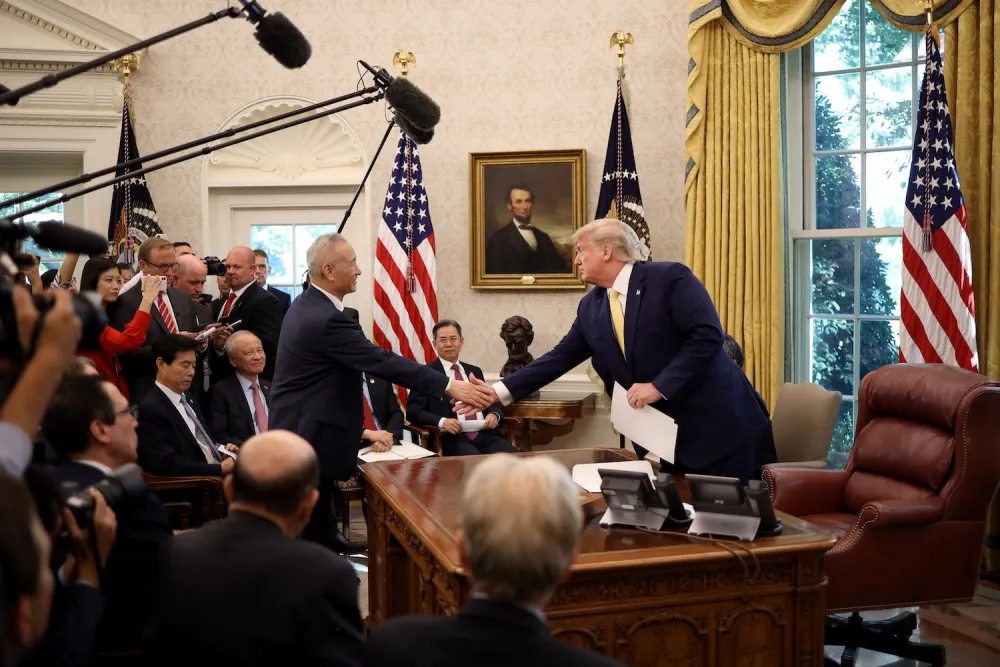
作者/Author(s): Wendy cutler
網站來源/Source: Foreign Policy
日期/Date: 01/08/2025
關鍵字/Keywords: 經濟、川普、貿易戰、中國
摘要:
川普基於多種原因,威脅提高中國產品的關稅,甚至可能撤銷中國的永久正常貿易關係(PNTR)的地位。川普威脅北京到底是想要與中國談判,還是試圖與中國供應鏈脫鉤,沒有人知道。不過,川普第一任期內的美中第一階段貿易協定或許可以提供一些啟示。
- 第一階段貿易協定要求中國在兩年內購買更多美國商品和服務,並改革其不公平的貿易做法。中國履行了大部分條款,但未能完成購買義務。
- 美中雙方原本預期進行第二階段談判,解決其他的問題。然而,由於問題太複雜以及新冠疫情加劇兩國緊張關係,第二階段談判最後胎死腹中。
- 隨著美中關係惡化,雙方逐步減少互賴,川普與北京之間更難展開新的貿易談判,甚至可能徒勞無功。
- 中國目前面臨國內經濟困境,若談判結果優於斷絕雙邊貿易關係,必然會願意與川普進行談判。
- 新的貿易協議應包括以下內容:
- 更新第一階段協議的條款,同時增加新的重點領域。
- 制止中國繼續實施會讓產能過剩的補貼政策。
- 比起非單方面徵收貿易關稅,美國可採取進口配額的方式來處理不公平貿易產品的進口問題。
- 為防止中國透過中介國家銷售產品,美國應對中國投資公司實施反規避措施、嚴格的原產地規則或出口禁令。
- 美國應防止中國讓人民幣貶值,以免削弱潛在協議的目標
- 美中雙方應考慮取消非戰略商品的關稅。
- 若美國能與中國達成協議,就必須緊密監控和執行協議內容。此外,美國也需緩解其他貿易夥伴的擔憂,確保美中貿易協議不會損害其他貿易夥伴的經濟利益。
Summary:
For several reasons, Trump threatened to increase tariffs on Chinese products and may even revoke China's permanent normal trade relations (PNTR) status. What Trump wants to achieve from his threats is unknown, such as negotiating with China or decoupling from China-related supply chains. However, the U.S.-China Phase One trade agreement during Trump's first term may provide some insights.
- The Phase One trade agreement obliges China to purchase more U.S. goods and services over two years and reform its unfair trade practices. China fulfilled most of the terms except for the purchasing obligation.
- The U.S. and China anticipated a Phase Two negotiation to resolve the remaining issues. However, it never took off due to the complexity of the problems and the COVID-19 pandemic, which fueled tensions between the two countries.
- As U.S.-China relations worsen and both sides take steps to reduce their mutual dependence, new trade negotiations between Trump and Beijing become more challenging, if not futile.
- China has domestic economic predicaments and will negotiate with Trump if the outcome is better than severing bilateral trade relations.
- A new trade deal should:
- Update the terms from the Phase One agreement while adding new focus areas.
- Stop China's subsidy practices that lead to overproduction.
- Instead of imposing unilateral trade tariffs, the U.S. could accommodate China by setting a quantity limit on the imports of unfairly traded products.
- To prevent China from selling products through intermediary countries, the U.S. should impose anti-circumvention measures, strict rules of origin, or export bans on Chinese investment companies.
- The U.S. should prevent China from depreciating the Yuan so that it will not undermine the objectives of the potential deal.
- The U.S. and China should consider lifting tariffs on non-strategic goods.
- If the U.S. could strike a deal with China, it must follow up with intense monitoring and enforcement. Furthermore, it must alleviate the concerns of its trade partners and ensure that its agreement will not harm the economic interests of its trade partners.
